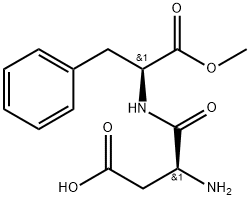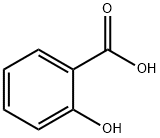Orange sweet oil
- CAS NO.:8008-57-9
- Empirical Formula: C15H24O
- Molecular Weight: 0
- MDL number: MFCD00147798
- EINECS: 933-127-3
- Update Date: 2025-12-17 09:49:31
What is Orange sweet oil?
Description
Sweet orange is an evergreen tree of Oriental origin, 4 to 6 m (13
to 20 ft.) high. It has a cylindrical trunk, alternate leaves, and odorous flowers and fruits. The fruit has a green epicarp that turns
yellow on ripening; a white, spongy mesocarp; and an endocarp
consisting of succulent segments bearing seeds.
The Mediterranean countries in which it is cultivated include Italy
(Sicily, Calabria, and Campania), Algeria, Tunisia, Morocco,
Spain, and Israel; in addition, very important production occurs
in California and Florida. It has an enormous worldwide economic
importance. In the various countries, cultivation is geared toward
the production of (1) fruits for immediate consumption and (2)
fruits to be used for the production of juices or essential oils. For
this purpose, the most suitable varieties have been selected.
The parts used are the leaves (and small twigs), flowers, ripe fruits,
small, whole, unripe fruits, peels, and juice. The oils and various
derivatives from orange, sweet have a mild to highly bitter, astringent
flavor and a characteristic aroma. The juices are sweet and
acidic or tart.
Petitgrain essential oil of sweet orange can be obtained from the
leaves, small, whole unripe fruits, twigs, and flowers by steam
distillation. Its production is low because of its limited application
(perfumery).
Sweet orange essential oil is extracted from the peels of partially
ripened fruits in 0.4 to 0.5% yields using suitable machinery fpr
the rupturing of the oil-bearing cells (expression). A less valuable
quality of essential oil is obtained by steam distillation of peels.
Chemical properties
Sweet orange oil is obtained from the peel of the fruits of Citrus sinensis (L.)Osbeck. It is a yellow to reddish-yellow liquid with the characteristic odor of
orange peel and may become cloudy when chilled. Sweet orange oil is often
produced in combination with orange juice (mainly in the United States and
in Brazil and, much smaller quantities, also in Spain and Israel).
d2020 0.842–0.850; n20D 1.4700–1.4760; α20D +94 ° to +99 °; evaporation residue: 1–4%.
The oils have a high terpene monoterpene hydrocarbon content. The main constituent is (+)-limonene (93–96%). Important for the typical
sensory properties are components present only in low concentrations
such as octanal (0.1–0.4%), decanal (0.1–0.7%), and citral (0.08–0.3%). The
sesquiterpene aldehydes α-sinensal and β-sinensal
(0.01–0.06%), which contribute particularly to the special sweet orange
aroma, also occur in other citrus oils, although in lower concentrations. A number of higher boiling point, nonvolatile
constituents contributing to the flavor and color of orange oil have been described in the literature.
Worldwide production of cold-pressed orange oil exceeds 50 000 t/yr.
The main producer is Brazil (30 000 t), followed by the United States (20 000 t). The main uses of orange oil are the flavoring of beverages and confectioneries and perfuming eau de cologne, soaps, and household products.
Chemical properties
From leaves; small, whole, unripe fruits; twigs; and flowers: Petitgrain oil of sweet orange can be obtained from the above by steam distillation. Its production is low because of its limited application (perfumery). From fruit (peels): Sweet orange essential oil is extracted from peels of partially ripened fruits in 0.4 to 0.5% yields using suitable machinery for the rupturing of the oil-bearing cells (expression). A less valuable quality of essential oil is obtained by steam distillation of peels. Sweet orange oil has a characteristic odor and typical aromatic flavor. The cold-pressed sweet orange oil is obtained by expression, without the use of heat, from the fresh peel of the ripe fruit. It has a characteristic odor and taste of the outer part of fresh, sweet orange peel.
Physical properties
Sweet orange essential oil is a clear, mobile liquid, with a yellow-to-orange color. The coldpressed oil is miscible with dehydrated alcohol and carbon disulfide. It is soluble in glacial acetic acid. The oil may contain a suitable antioxidant. Physical–chemical characteristics of the oil vary according to origin.
Occurrence
Found in the peel of the fruit Citrus sinensis (Linn.) Osbeck (Fam. Rutaceae) (Gildemeister & Hoffman, 1959; Guenther, 1949).
Preparation
By expression of the peel of the ripe fruit (Arctander, 1960).
Definition
Extractives and their physically modified derivatives. Citrus sinensis, dulces, Citrus.
Essential oil composition
The essential oil contains more than 90% limonene, in addition to aldehydes (decylic, octylic, nonylic and dodecylic), citral acids and esters. From the raw essence of sweet orange, the terpeneless essence can be obtained by vacuum distillation (with heat), by chromatographic separation or by extraction with low-proof alcohol. By washing the oil with low-proof alcohol, one obtains the soluble essence of sweet orange with yields of 1:50, 1:100, 1:200, 1:400; the essence is used in the flavoring of carbonated beverages, syrups, liqueurs, aperitifs and other products. Orange pastes for use in carbonated beverages are prepared using terpeneless essential oil, juices, pectins and sugars (Burdock, 1997).
Safety Profile
A skin irritant. Questionable carcinogen with experimental neoplastigenic data. When heated to decomposition it emits acrid smoke and irritating fumes.
Properties of Orange sweet oil
| Boiling point: | 177 °C |
| Density | 0.845 g/mL at 25 °C |
| refractive index | n |
| FEMA | 2822 | ORANGE ESSENCE OIL, TERPENELESS (CITRUS SINENSIS (L.) OSBECK) |
| Flash point: | 130 °F |
| color | Yellow to deep-orange liquid |
| Odor | characteristicorange and odor |
| optical activity | [α]20/D +97°, neat |
| CAS DataBase Reference | 8008-57-9 |
| EPA Substance Registry System | Sweet orange oil (8008-57-9) |
Safety information for Orange sweet oil
| Signal word | Warning |
| Pictogram(s) |
 Flame Flammables GHS02 |
| GHS Hazard Statements |
H226:Flammable liquids |
| Precautionary Statement Codes |
P210:Keep away from heat/sparks/open flames/hot surfaces. — No smoking. P370+P378:In case of fire: Use … for extinction. |
Computed Descriptors for Orange sweet oil
Orange sweet oil manufacturer
New Products
4,4-Difluoropiperidine hydrochloride tert-butyl 9-methoxy-3-azaspiro[5.5]undecane-3-carboxylate Indole Methyl Resin N-Isopropylurea N,N-Dicyclohexylcarbodiimide(DCC) MELDRUMS ACID 5-METHYLISOXAZOLE-4-CARBOXYLIC ACID Magnessium Bis glycinate Zinc ascorbate 1-bromo-2-butyne 2-acetamidophenol 9(10H)-anthracenone Erythrosin B, 4-Piperidinopiperidine 2-((4-morpholinophenylamino) (methylthio) methylene) malononitrile 2,4-dihydroxybenzaldehyde 3-(4-morpholinophenylamino)-5-amino-1H-pyrazole-4-carbonitrile Methyl 2-methylquinoline-6-carboxylate 2,6-dichloro-4-nitropyridine 4-Bromo-2-chlorobenzonitrile 2-(benzylamino)acetic acid hydrochloride 4-(tert-Butoxycarbonylamino)but- 2-ynoic acid 3,4-dihydro-2H-benzo[b][1,4]dioxepine 1-Phenyl-1-cycloprppanecarboxylicacidRelated products of tetrahydrofuran








You may like
-
 8008-57-9 98%View Details
8008-57-9 98%View Details
8008-57-9 -
 Orange oil, natural, cold-compressed CAS 8008-57-9View Details
Orange oil, natural, cold-compressed CAS 8008-57-9View Details
8008-57-9 -
 Orange oil, cold-pressed, Brazil origin CAS 8008-57-9View Details
Orange oil, cold-pressed, Brazil origin CAS 8008-57-9View Details
8008-57-9 -
 Orange Oil extrapure CAS 8008-57-9View Details
Orange Oil extrapure CAS 8008-57-9View Details
8008-57-9 -
 Oil orange CAS 8008-57-9View Details
Oil orange CAS 8008-57-9View Details
8008-57-9 -
 Orange Oil extrapure CAS 8008-57-9View Details
Orange Oil extrapure CAS 8008-57-9View Details
8008-57-9 -
 Orange Oil CAS 8008-57-9View Details
Orange Oil CAS 8008-57-9View Details
8008-57-9 -
 Orange oil CAS 8008-57-9View Details
Orange oil CAS 8008-57-9View Details
8008-57-9
